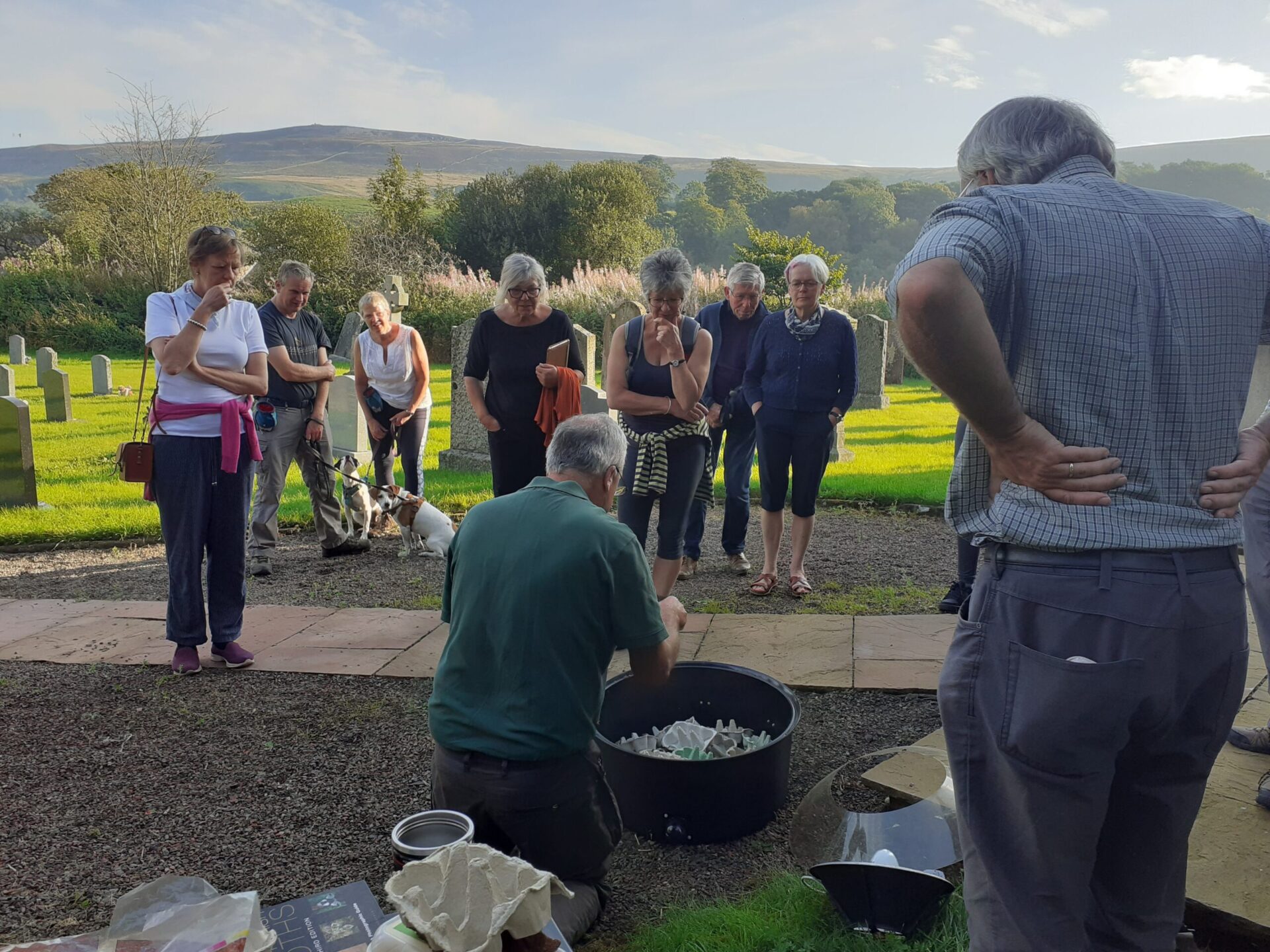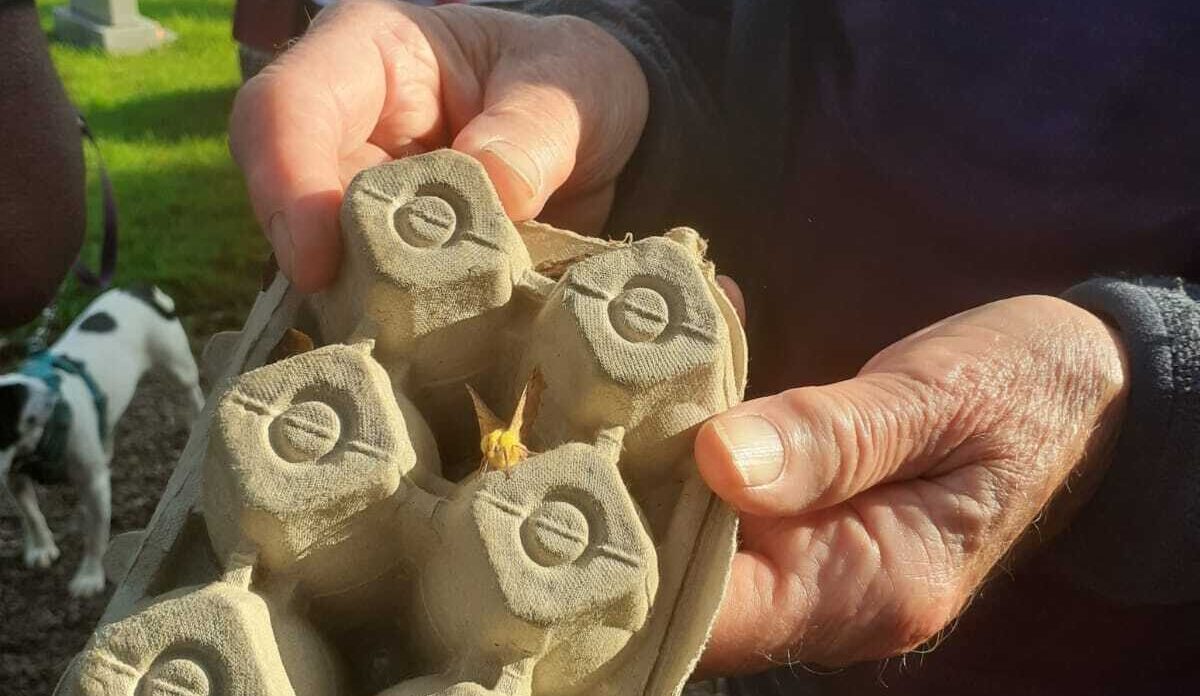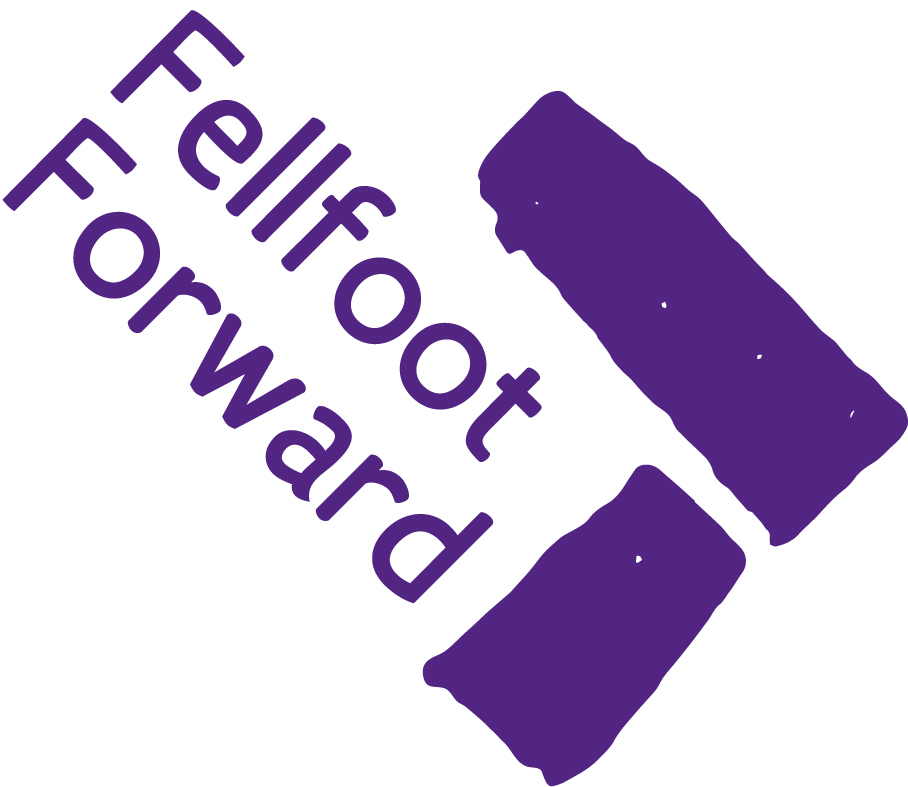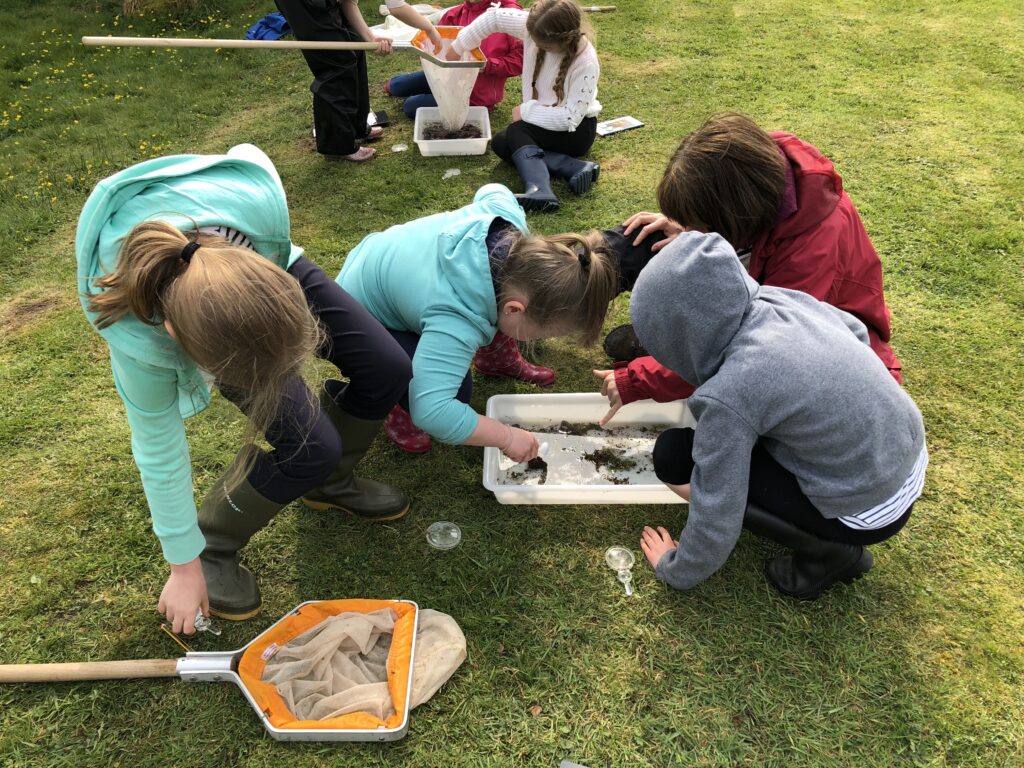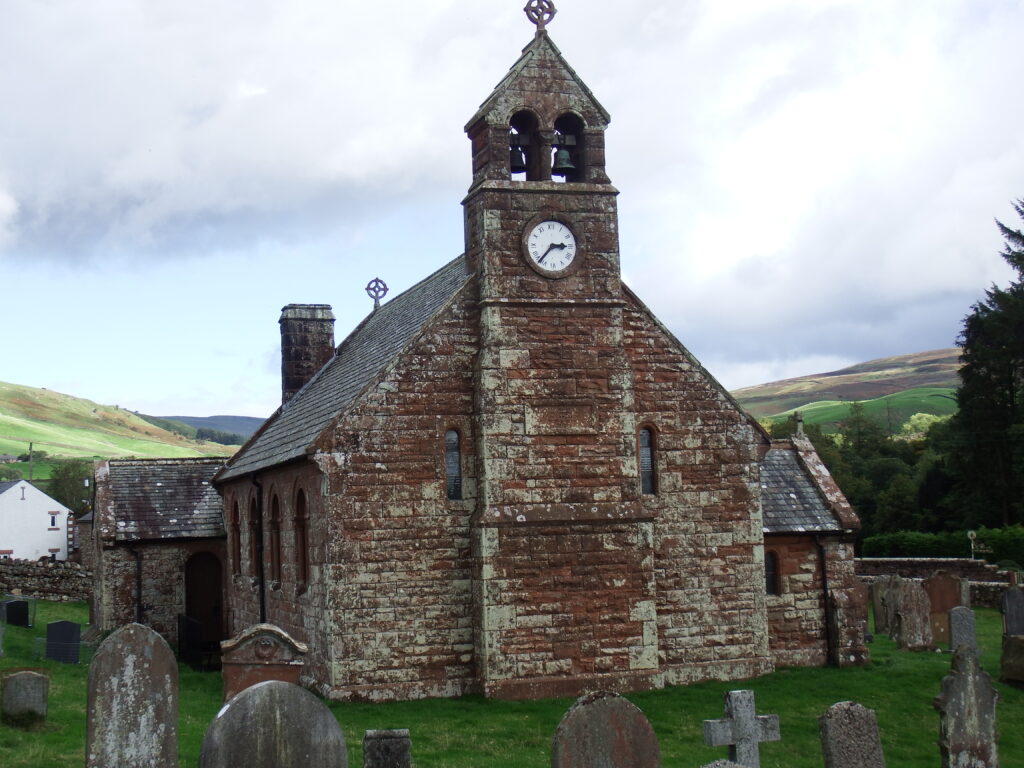What we do
Moth morning
By Lizzy Benn, Fellfoot Forward Trainee
Early on a sunny September morning, 12 people came out to rise and shine with the moths of Cumrew village and fellside in the Eden Valley. Moths are diverse in their colours, characteristics and behaviours so make fascinating subjects to study.
As we opened the moth trap, everyone was able to see the moths inside and specimens were passed around for further examination. We began to learn how to recognise species, and found out more about why we are recording moths in the Fellfoot Forward LPS area.
The morning was led by local naturalist and experienced moth-er Guy Broome. Attendees learned how they can do their own moth trapping and recording and were able to ask questions about the moths they were handling.
The traps were full of large yellow underwing, flame moth, canary shouldered thorn, frosted oranges and many more. The star of the morning was the flounced chestnut moth which is thought to be a nationally declining species, particularly in the south, so it was a good find and record in Cumbria.

Moth trapping involves using a ultraviolet (UV) light to attract the nocturnal insects and temporarily trap them inside a container until they are processed and released the following morning. Moths outnumber similar species such as butterflies by the thousands. The array of diversity in them means we have less information overall about them. By taking records of moths, we can see which moths occur in the landscape and at what time of year. Many citizen scientists collecting this data make it possible for researchers to look at patterns among distribution and any changes occurring, for example as climate change effects become more apparent we can see if moth distribution is changing in response.

